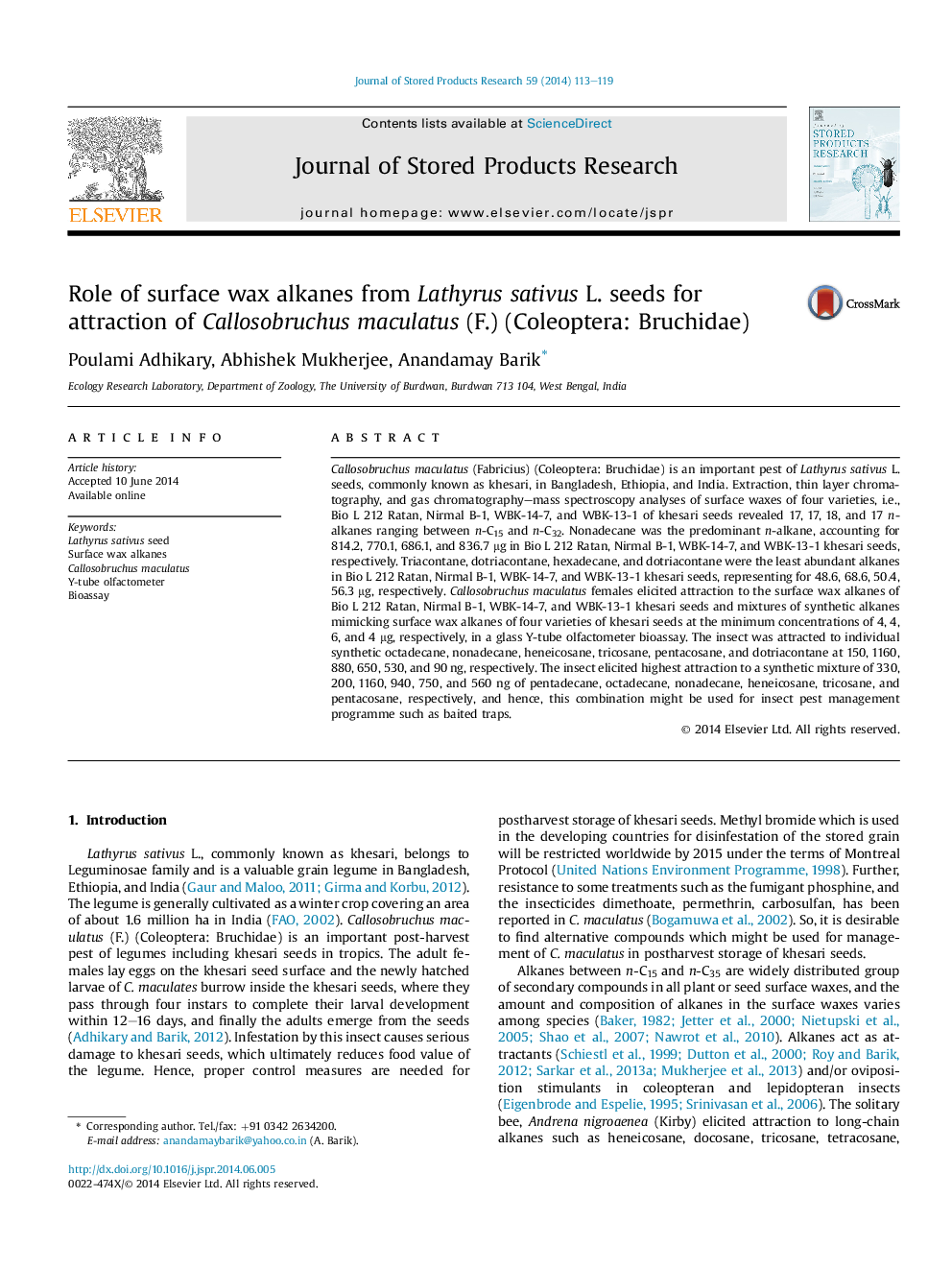| Article ID | Journal | Published Year | Pages | File Type |
|---|---|---|---|---|
| 6378416 | Journal of Stored Products Research | 2014 | 7 Pages |
Abstract
Callosobruchus maculatus (Fabricius) (Coleoptera: Bruchidae) is an important pest of Lathyrus sativus L. seeds, commonly known as khesari, in Bangladesh, Ethiopia, and India. Extraction, thin layer chromatography, and gas chromatography-mass spectroscopy analyses of surface waxes of four varieties, i.e., Bio L 212 Ratan, Nirmal B-1, WBK-14-7, and WBK-13-1 of khesari seeds revealed 17, 17, 18, and 17 n-alkanes ranging between n-C15 and n-C32. Nonadecane was the predominant n-alkane, accounting for 814.2, 770.1, 686.1, and 836.7 μg in Bio L 212 Ratan, Nirmal B-1, WBK-14-7, and WBK-13-1 khesari seeds, respectively. Triacontane, dotriacontane, hexadecane, and dotriacontane were the least abundant alkanes in Bio L 212 Ratan, Nirmal B-1, WBK-14-7, and WBK-13-1 khesari seeds, representing for 48.6, 68.6, 50.4, 56.3 μg, respectively. Callosobruchus maculatus females elicited attraction to the surface wax alkanes of Bio L 212 Ratan, Nirmal B-1, WBK-14-7, and WBK-13-1 khesari seeds and mixtures of synthetic alkanes mimicking surface wax alkanes of four varieties of khesari seeds at the minimum concentrations of 4, 4, 6, and 4 μg, respectively, in a glass Y-tube olfactometer bioassay. The insect was attracted to individual synthetic octadecane, nonadecane, heneicosane, tricosane, pentacosane, and dotriacontane at 150, 1160, 880, 650, 530, and 90 ng, respectively. The insect elicited highest attraction to a synthetic mixture of 330, 200, 1160, 940, 750, and 560 ng of pentadecane, octadecane, nonadecane, heneicosane, tricosane, and pentacosane, respectively, and hence, this combination might be used for insect pest management programme such as baited traps.
Related Topics
Life Sciences
Agricultural and Biological Sciences
Agronomy and Crop Science
Authors
Poulami Adhikary, Abhishek Mukherjee, Anandamay Barik,
